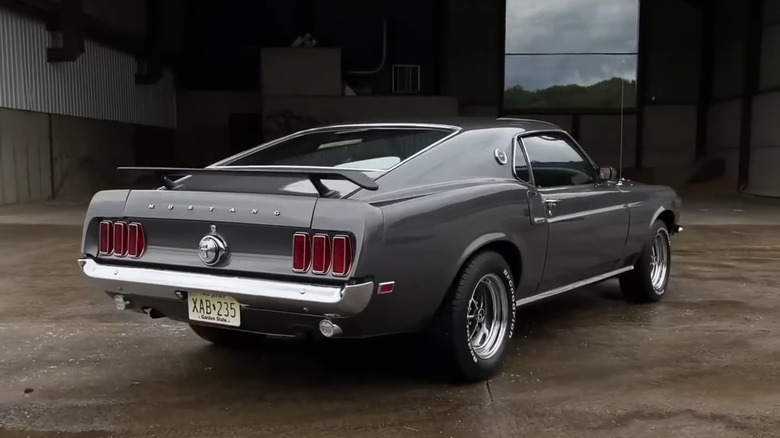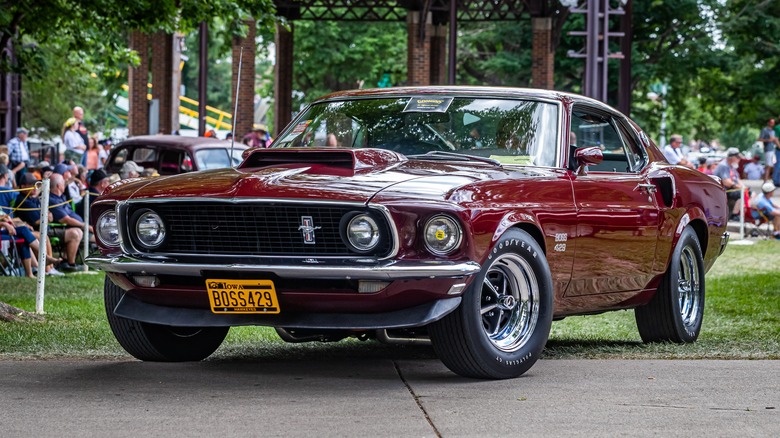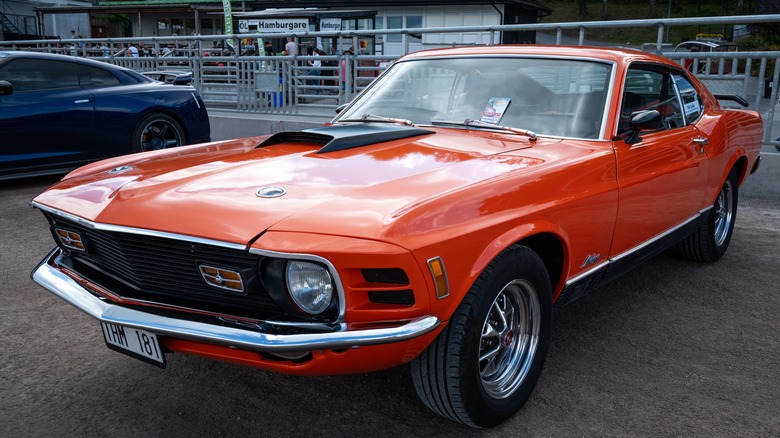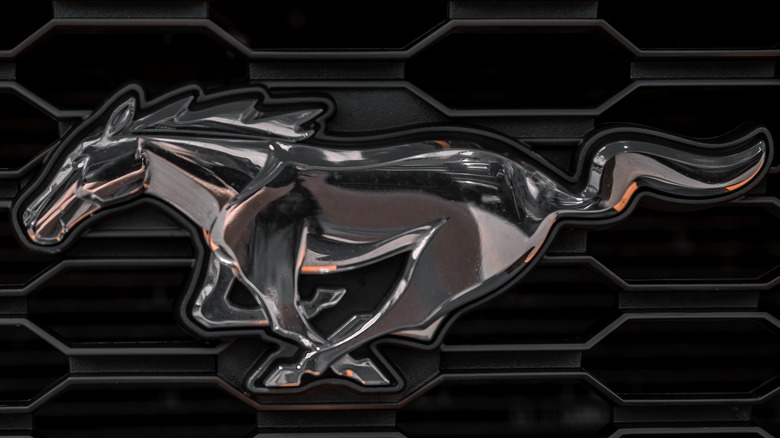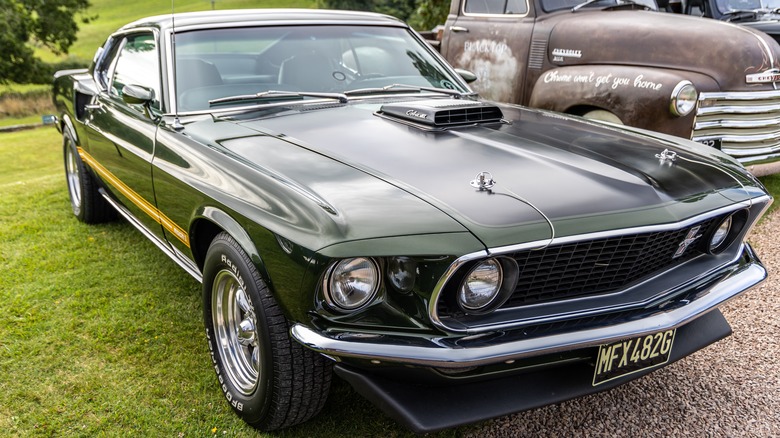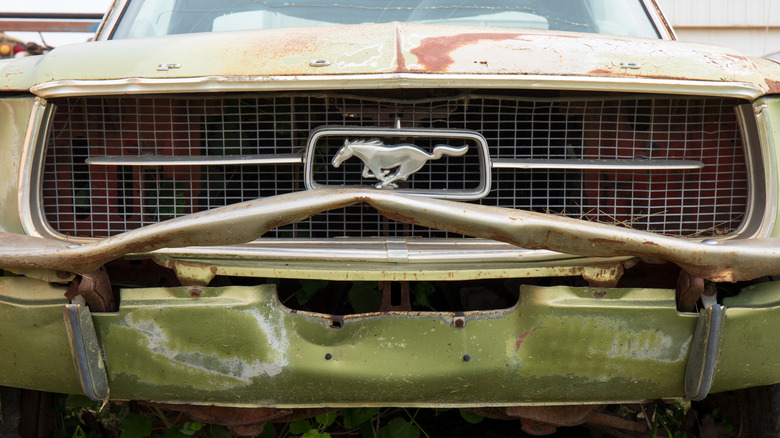5 Facts Fans Should Know About John Wick's Iconic 1969 Ford Mustang
Automobiles have occupied a place in pop culture since they began rolling out of tinkerer sheds and off assembly lines. Whether fictional like the Batmobile or real-life pieces of mechanical art like James Bond's Aston Martins, the cars of Hollywood have built careers as legendary and long-lasting as any screen sweetheart.
Some movie cars appear and disappear in a single scene, relegated to quick destruction in an explosion that makes auto fans wonder (and hope) that CGI was responsible for its demise, or at least that the producer blew up a replica, not the genuine article. Others attain glory as the star of a single, exciting chase scene before exiting stage left, never to be seen again. But some are so integral to the plot that they become icons simply for the series of events set to action around them.
The Wick universe is filled with awesome muscle cars, but John Wick's Mustang is king. It is one of those rare cars that doesn't attain much screen time but drives the entire plot of the film (or three or four films) nonetheless. You may protest, saying it wasn't the car that sent John Wick on his path of vengeance — it was the puppy! There is an argument for that, but Wick's sweet, stylish Mustang drew the attention of the baddies in the first place, setting off a chain of events that would define the entire series. In honor of the car that may be responsible for the highest kill count in cinema history, we pay homage to John Wick's iconic 1969 Ford Mustang, a vehicle that has transcended its role as a mere prop to become a symbol of the franchise's enduring appeal.
John Wick's Mustang is meant to be a 1969 Boss 429
The viewer first catches sight of John Wick's Mustang at the opening of the first movie. Wick is fueling up and minding his own business when an admirer approaches. We can tell he is evil because he is smoking a cigarette at a gas station. The evil young man comments on the Mustang, identifying it as a 1970 Boss 429. Wick corrects him by telling him it is a 1969 model.
It had to be one or the other because Ford made the first-generation Boss model Mustangs in 1969 and 1970 as homologation racing specials. One, the small-block Boss 302, was earmarked for the Trans American series, while the big-block Boss 429's 7.0-liter engine was designed for NASCAR back in the days when there were still stock parts in stock car racing. Wick is a rare and unique guy, and so is his car. Ford made 1,359 Boss 429s — 857 in 1969 and another 499 in 1970 — before shutting down production. A 1969 Boss 429 like Wick's is one of the muscle car market's rarest and most sought-after Mustangs.
A prime example of a Boss 429 once sold for $605,000. The average value hovers around $313,000. The lowest recent sale on a car like that pins its value at $159,000. Sure, the death of Wick's puppy (spoiler alert?) might set up a moral justification for everything that happens afterward, but Wick can't have been happy about having his ride stolen.
The screen car was a sheep in wolf's clothing
Now that you know just how cool, unique, and valuable John Wick's car is, it's time to drop the bomb: it's all a lie. A movie set is no place for a vehicle as unique and valuable as a Boss 429, especially since the production would destroy all five Mustangs built for the film. Hollywood pockets are deep, but not that deep, and the car community's collective apoplexy if five Boss Mustangs went to the great car crusher in the sky for a mere movie would undoubtedly scar the muscle market.
Producers devised a standard Hollywood solution: fake it. Fortunately, Ford made a near-twin Mustang that shared many of the same lines as the Boss 429. The Mach 1 is one of the best-looking Mustang models ever built by Ford and definitely special — but not Boss special. Ford began production of the Mach 1 in 1969 after a 1968 concept made waves bearing the first-ever Mach 1 badge. One of four new Mustangs introduced that year, the Mach 1 was intended to be a more sedate version of the rough-and-ready Boss. Customers could customize nearly anything, including a selection of engines from the 351 Windsor V8 to a 428 Cobra Jet.
The Mach 1 is objectively beautiful, but where it becomes sheep-like is its production numbers. Ford shepherded 72,458 Mach 1s into buyers' hands in 1969 alone. By the time production on the John Wick films rolled around, it was significantly cheaper to modify a Mach 1 for Boss 429 acting duties.
The Hitman Mustang earned its own identity
The film did an admirable job building a gorgeous Mustang, whatever its genesis or purported rarity. Despite being claimed as a Boss 429 (John Wick wouldn't lie) while being a dressed-up Mach 1, the reality is somewhat hazier. The film car clearly shows an automatic transmission — a feature unavailable on the homologation Boss 429. Other discrepancies include hood pins, which were available on the '69 Mach 1 but absent on the Boss 429, a wood-grain steering wheel from a Shelby Mustang, bulging rocker panels from a '70 Mach 1, and a hood scoop smaller than that of the Boss 429 (which had the largest hood scoop in Mustang history).
Some auto honks could claim that Wick's Boss 429 wasn't authentic, but what if Wick modified it himself? He is clearly an aficionado of the finer things, be they mechanical items like weapons and cars, starkly modern home design, or whatever treatment he uses for the luster and shine of those beautiful locks of hair.
Whether production didn't want to bother with the finest details for a car that doesn't actually have that much screen time or they built it to match Wick's aesthetic, the formula struck a chord. Whatever it is, Wick's Mustang has inspired copycats. Similarly turned out custom jobs that mimic Wick's have earned a unique sobriquet: the Hitman Mustang.
You can own one (kind of)
You can own anything with enough money — even an original Boss 429. But the car from the films inspired at least one custom builder to develop a restomod Hitman Mustang all yours for the reasonably low price of $377,000. We've encountered Classic Recreations before. Its jaw-dropping 1967 Shelby GT500CR is nothing to sneeze at, but it's far from the only modded Mustang in its stable. The Texas-based company builds classics into modern supercars by starting with an original body and cramming it full of modern gadgets and stunning design.
Though they never come right out and say it, Classic's 1969 "Hitman" Fastback appears by all rights to be an homage to Wick's ride. Replete in gun-metal grey with black stripes (CR calls the paint combination Hitman Grey and Beagle Black), hood pins, and spoiler in place, it includes all the beauty of the movie car combined with modern amenities and power.
Buyers can choose between 302-, 363-, and 429-cubic-inch engine options, with the top choice trading an additional $25,000 for a whopping 670 horsepower. Wilwood brakes, front and rear coilovers, and American racing wheels are just some of the other options that allow you to live out your John Wick fantasy. But we're going to have to insist it stops with the car. Leave the righteous vengeance to Hollywood.
None of the film cars survived
Perhaps a restomod version isn't enough for you. After all, you're the biggest Keanu Reeves fan in the world and have way more dollars than sense. Unfortunately, you're still out of luck. None of the five cars built for the 2014 production of John Wick survived filming.
Ever the hands-on Hollywood star, Reeves reportedly did a great deal of the driving in the films himself. Reeves has undoubtedly shown a predilection for automotive pursuits with his motorcycle company, Arch, and he has recently dabbled in racing as a driver in the amateur Toyota GR Cup. Unfortunately, none of those pursuits prevented him from crashing one of the Hitmen Mustangs on a first take.
In the end, perhaps it didn't matter. Each Mustang was slated for destruction from the beginning (another great reason not to use a true Boss 429.) The production went on to destroy even more Mustangs for the sequel. The John Wick franchise has the ignominy creating a higher demand for first generation Mustangs while simultaneously shrinking the available pool of them.
